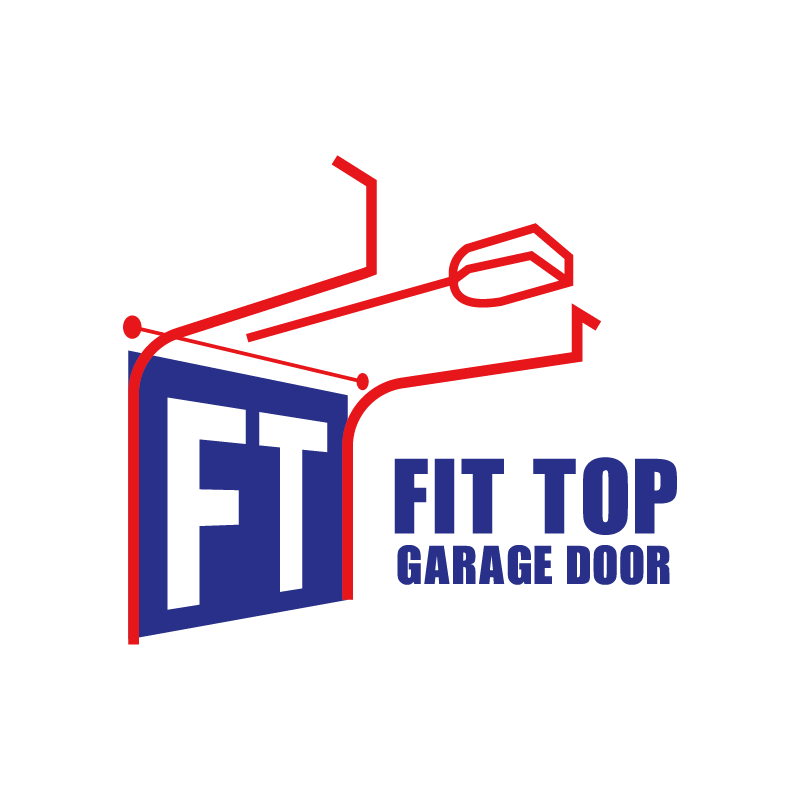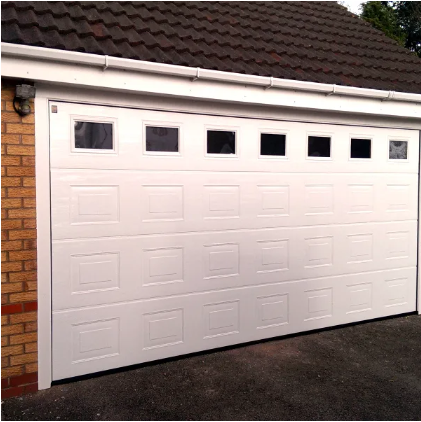自動ドアのための基本的な月次メンテナンスタスク ギャラージ ドア
ドア部品の視覚検査
自動車庫のドアの部品を定期的に点検することで、すべてが正常に機能し続けることを確認できます。私は毎月、レールやローラー、そして小さな滑車の部分に摩耗や錆、またはドアの動作に問題を引き起こす可能性のある歪みがないかをチェックします。継続的な動作によってナットやボルトが緩んでくることもあるので、それらの確認も忘れてはいけません。何をいつ点検したかを記録しておくことは非常に役立ちます。それぞれの点検後に簡単なノートに記録しておくことで、大きな問題になる前に異常を察知できるようになります。ご存知の方は少ないかもしれませんが、 ガレージドア メーカー協会もこのような記録の保存を推奨しています。ドアの寿命を延ばすのにも役立つだけでなく、予期せぬ故障が起きた際に homeowners(住宅所有者)が対応に追われることも防げるためです。
センサーや安全装置の掃除と調整
セーフティセンサーは事故を防ぎ、ガレージドアが正常に作動し続けるために重要な役割を果たします。これらのセンサーにほこりや汚れがたまるとよく問題が発生するため、柔らかい布で定期的に清掃することが推奨されています。また、センサーのアラインメントを正しく調整することも非常に重要です。両方のセンサーが互いに向かい合い、適切な高さに設置されていなければ、システムは意図した通りに作動しません。センサーのアラインメントが正しくない場合、ドアが完全に閉じられないという現実的な危険が生じます。調整が必要な場合は、センサーを慎重に位置に移動させるか、必要に応じてマウントブラケットを固定してください。センサーを正しくアラインメントしておくことは、システム全体をより安全にするだけでなく、自動車用ガレージドアが日々、問題なく機能し続けるためにも役立ち、将来的に不要なリスクを生じさせることも防いでくれます。
ドアのバランスとアライメントのチェック
自動車庫門のバランスを適切に保つことは、スムーズに動作させたり寿命を延ばしたりするために非常に重要です。バランスを確認する際は、まずスイッチでオープナーの接続を解除し、手でドアを半分ほど持ち上げてみます。ドアが下がってしまう場合は、早急に修理が必要です。ドアがレール内でどのように位置しているかも多くのことを教えてくれます。ドアパネル間に隙間がある場合や、レールにひっかかって動きが止まるような場所がある場合は、調整が必要です。このような作業は、ある程度専門的なスキルが必要な場合もあり、適切に調整ができないままだと部品が摩耗しやすくなり、安全上のリスクが生じる可能性があります。こうした点に注意しながら経年変化を見守ることで、多くの車庫ドアは大きな問題なく何年も安定して機能します。
スムーズな動作のための適切な潤滑技術
ローラー、ヒンジ、バネの潤滑
スムーズかつ静かに動作する自動車庫ドアを実現するためには、ローラーやヒンジ、スプリングに潤滑剤を塗布することが非常に重要です。ここでは、優れたシリコンスプレーやリチウムグリースが効果を発揮します。適切な潤滑とは、つまり摩擦を低減することを意味します。これにより部品の寿命が延び、ドア自体の全体的な性能も向上します。ドアがオープナーメカニズムに接続されている厄介な部分にも忘れずに潤滑剤を塗布してください。それにより錆の発生を防ぎ、すべての作動部分を正常に機能させたままにできます。湿気の防止も重要です。金属部品は腐食が始まると長持ちしません。多くの人は、特に大きな嵐や気温の急激な変化の後には、年に一度、ドアの潤滑作業を行えば十分であると気づいています。中には、この重要なメンテナンス作業をいつ行ったかを忘れないように、ノートやスマートフォンのカレンダーに記録しておく人もいます。
レールのアライメントと清潔さの維持
レールを正しく整備し、清潔に保つことは、ガレージドアのメンテナンスにおいて非常に重要な項目の一つです。まず最初にレールそのものをしっかりと点検してください。ホコリ、汚れ、または長期間にわたって蓄積した異物がないかを確認しましょう。まっすぐで清潔なレールは、全体の動作を安全にする鍵です。石鹸分の入ったぬるま湯を使って拭き取り、車輪が転がる部分に何も障害物がなくなるまでレールをきれいにすると効果的です。ほんの少しの清掃で、車輪の摩耗を防ぎ、オープナー機構への負荷を軽減することができるのです。もし何かが歪んでいるように感じたら、レールを固定しているブラケットのネジを緩めて、再度レールがまっすぐ平行になるように調整し、その後、すべてのネジをしっかりと締め直してください。ただし、この点検作業は定期的に行う必要があることも忘れないでください。レールのメンテナンスを怠ると、後々さまざまな問題が発生するだけでなく、高価なガレージドアの寿命も短くなってしまいます。
安全性機構のテストとメンテナンス
機械的逆动作機能の確認
ガレージドアが何かの障害物に当たった際に正しく逆転するかどうかのテストをすることは、単なる良い習慣ではなく、家にいる全員、そしてペットの安全を確保するために非常に重要です。多くの人は月に一度、ドアが通常閉じる位置にペーパータオルなどの束を置いて、簡単な点検を行います。正常に作動すれば、ドアはそのパスにある障害物を感知するとすぐに停止し、再び上昇します。もし、それができない場合は、安全センサーに問題がある可能性があるため、誰かが点検・修理を行う必要があります。定期的な点検により、電子部品と可動部分が正しく機能しているかを確認することができます。事実として、誰もが簡単なテストを怠ったために機械が故障したり、最悪の場合、誰かが怪我をするような状況を避けたいのです。
フォトアイの正常な動作を確認する
ガレージドアのフォトアイセンサーが正しく作動し続けることは、安全上非常に重要です。数週間ごとにそれらを点検し、必要に応じて位置を調整し、正しく動作しているかいくつかの簡単なテストを行って確認します。この小さなセンサーがドアの前にある物を検知しなくなると、すぐに深刻な事故につながる可能性があります。定期的に湿らせた布で拭いて、センサーにたまったほこりやクモの巣を取り除くようにしましょう。また、破損したり故障したセンサーは、すぐに交換しないようにしてください。センサーは、重大なけがを防ぐための第一線の防御手段であるだけでなく、夜間に不法侵入者を家の中に入れない役割も果たしています。
季節ごとの調整と専門家のメンテナンス
極端な気温に対する防水処理
自動車庫のシャッターを適切に防風・防水しておくことは、その耐久性や、暑い夏や厳しい冬でも正しく機能し続けるかどうかに大きく影響します。まず、端部の気密パッキンを点検し、ドア枠内の断熱材も確認してください。傷んだパッキンは風や水を侵入させる原因となるため、交換することで2つの問題を一度に解決できます。特にスチール製の車庫シャッターの場合、断熱材のキットを取り付けると効果が大きく、金属製のドアは他の素材と比べて温度変化を伝えやすいためです。適切な断熱が施されていないと、スチール製のドアは時間とともに反ったり錆びたりする可能性があります。目安として、季節の変わり目、たとえば遅春と初秋に簡単な点検を行うとよいでしょう。これにより、冬が本格化したり、夏の猛暑が到来する前に問題を発見して対処できます。
年次プロフェッショナル点検のスケジューリング
プロの定期点検を受けることは、車庫門を長期間にわたって適切に機能させるために非常に重要です。年に一度、専門の業者による点検を受けることで、動作に問題がないか確認でき、大きな問題になる前に小さな不具合を発見できます。このような予防的な対応を取ることで、ドアの寿命を延ばすことができ、後で高額な修理費を支払う必要がなくなるため、結果的に費用を節約できます。また、技術者たちは、住宅や事業所に設置されているドアの種類に応じて、適切なアドバイスを提供してくれます。ドアの適切な動作を維持し、今後何年も問題なく使用できるようにするためには、彼らの経験が非常に重要です。
予測保全のためにスマート技術を活用する
IoTセンサーやリモートモニタリング
自動車庫ドアシステムにIoTセンサーを追加することで、予知保全の可能性が大幅に向上します。センサーはドアの開閉頻度を追跡し、摩耗の兆候を監視し、スマートフォンアプリを通じて修理が必要になる可能性があるタイミングを通知します。 homeownersは問題が深刻化する前から潜在的なトラブルに関する通知を受け取ることができるので、小さな問題の段階で修理を行うことが可能になります。この方法により安全性も向上し、誰も完全に故障するまで待つ必要がありません。また、毎月などの面倒な目視点検の必要性も減少します。遠隔監視により、人々は自宅の車庫ドアをどこからでも確認でき、常にスムーズに動作させることができます。わざわざ車庫に降りて手動で確認しなくても済むようになるのです。車庫ドアの機器の寿命を延ばしたい人にとって、これらのスマートセンサーは時間とともに本質的な価値を提供します。
AI駆動の診断で先制的なケアを実現
AIツールがガレージドアシステムに統合されると、メンテナンス作業の在り方が大きく変わります。何かが故障するのを待つのではなく、これらのスマートシステムは、長期間にわたって収集されたさまざまなデータをもとに、いつメンテナンスが必要になるかを実際に知らせてくれます。AIは、部品の摩耗パターンや作動中の異常な騒音、メカニズム内部の温度変動などもチェックします。このような診断機能により、モーターが通常より過度に作動している場合や、安全センサーが適切に機能しなくなっているような問題も早期に発見できます。このテクノロジーを導入した住宅所有者は、予期せぬ故障が少なくなり、自動車ガレージドアの寿命も長く感じられる傾向があります。自宅の安全を常に保ちたい人にとって、長期的にはAIベースのメンテナンスソリューションへの投資が非常に理にかなっています。
よくある質問
なぜガレージドアの部品に毎月視覚点検を行うことが重要ですか?
月ごとの視覚点検では、ドアの動作を妨げる可能性のある摩耗、錆、またはずれを検出し、より大きな問題を防ぎ、ドアの寿命を延ばすのに役立ちます。
掃除と調整された安全センサーがガレージドアの機能をどのように向上させるか説明してください。
清潔で正確に揃えられたセンサーは、ドアの安全な動作を確保し、事故を防ぎます。誤った位置合わせはドアが閉まらない原因となり、安全性に問題を引き起こす可能性があります。
物体がパスを妨害した場合にガレージドアが逆方向に動かない場合、どのような対策を取るべきですか?
ガレージドアが障害物に当たっても逆方向に動かない場合は、直ちにメンテナンスが必要な故障している安全装置を示しています。家族の安全を確保する必要があります。
IoTセンサーを使用することで、ガレージドアのメンテナンスはどのように強化されますか?
IoTセンサーは、ドアの使用状況やメンテナンスが必要なタイミングに関するリアルタイムデータを提供し、ホームオーナーに潜在的な問題を通知することで、手動での詳細チェックなしに適時に修理できるよう支援します。

